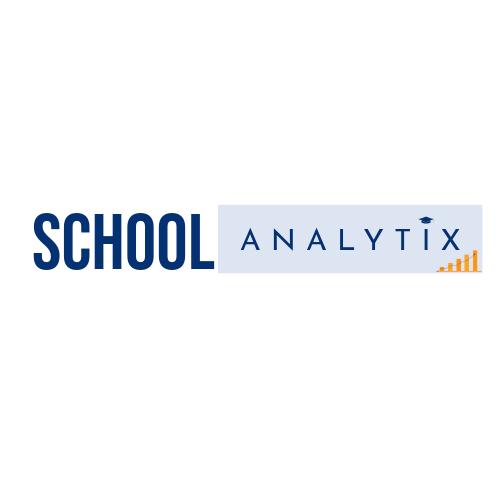Attendance management is a critical aspect of ensuring student success and engagement in educational institutions. Traditionally, tracking student attendance has been a manual and time-consuming process for educators and administrators. However, with the advancement of technology and the integration of Student Information Systems (SIS), schools now have the opportunity to streamline attendance management through the utilization of attendance dashboards. This article explores how educational institutions can leverage SIS data for real-time monitoring and analysis of student attendance, leading to improved accountability, intervention, and student outcomes.
The Importance of Attendance Management
Academic Performance:
Regular attendance is closely linked to academic achievement, with studies consistently showing a positive correlation between attendance rates and student grades. Students who are frequently absent miss out on valuable instructional time, which can have a detrimental impact on their learning and overall academic performance.
School Climate:
Attendance patterns also reflect the overall climate and culture of a school. High rates of absenteeism may indicate underlying issues such as student disengagement, school safety concerns, or challenges with school climate and culture. Monitoring attendance data can help identify areas for improvement and inform strategies to create a positive and supportive learning environment.
Funding and Resource Allocation:
In many educational systems, school funding is tied to student attendance rates. Higher attendance rates can lead to increased funding and resources for schools, while persistent absenteeism may result in budgetary constraints and resource limitations. Accurate attendance monitoring is essential for ensuring equitable distribution of resources and maximizing educational opportunities for all students.
Leveraging SIS Data for Attendance Management
Integration of Data Sources:
Student Information Systems serve as a central repository for student data, including demographic information, enrollment records, and attendance records. By integrating attendance data from the SIS with other relevant data sources such as learning management systems and transportation records, schools can create a comprehensive view of student attendance patterns and trends.
Real-Time Monitoring:
Attendance dashboards powered by SIS data enable educators and administrators to monitor attendance in real time, allowing for timely intervention and support. Through interactive visualizations and customizable reports, stakeholders can track daily attendance rates, identify patterns of absenteeism, and drill down into individual student attendance records. This real-time monitoring capability empowers educators to address attendance issues promptly and proactively engage with students and families to address underlying barriers to attendance.
Predictive Analytics:
In addition to real-time monitoring, attendance dashboards can leverage predictive analytics to forecast future attendance trends and identify at-risk students. By analyzing historical attendance data and student demographics, machine learning algorithms can identify patterns and risk factors associated with chronic absenteeism. This proactive approach enables educators to implement targeted interventions and support strategies to prevent absenteeism before it becomes a chronic issue.
Engagement and Communication:
Attendance dashboards also facilitate communication and collaboration among stakeholders, including educators, administrators, students, and parents. Through user-friendly interfaces and secure access controls, stakeholders can access attendance data and reports, track student progress, and communicate effectively about attendance concerns or interventions. This transparent and collaborative approach fosters a culture of accountability, engagement, and shared responsibility for student success.
Best Practices for Implementation
Data Privacy and Security:
Ensure compliance with data privacy regulations such as FERPA (Family Educational Rights and Privacy Act) and implement robust security measures to protect sensitive student information.
Professional Development:
Provide training and support for educators and administrators on how to effectively use attendance dashboards and interpret attendance data to inform decision-making and intervention strategies.
Family Engagement:
Involve parents and families in the attendance monitoring process by providing access to attendance dashboards and communicating regularly about attendance expectations, policies, and support resources.
Continuous Improvement:
Regularly evaluate the effectiveness of attendance dashboards and attendance management strategies, solicit feedback from stakeholders, and make adjustments as needed to improve outcomes for students.
Conclusion
In conclusion, the utilization of attendance dashboards powered by SIS data represents a transformative approach to attendance management in educational institutions. By leveraging real-time monitoring, predictive analytics, and collaborative communication tools, schools can enhance accountability, intervention, and student outcomes. However, successful implementation requires careful planning, stakeholder engagement, and a commitment to continuous improvement. By harnessing the power of SIS data for attendance management, educational institutions can create a culture of attendance, engagement, and academic success for all students.
Leveraging SchoolAnalytix for Expert Guidance
While PowerBI offers powerful analytics capabilities, maximizing its potential for student retention requires expertise in data visualization, predictive modeling, and educational analytics. This is where SchoolAnalytix comes into play. As a leading provider of data analytics solutions for educational institutions, SchoolAnalytix offers a wealth of expertise and resources to support institutions in their quest to optimize student retention.
By partnering with SchoolAnalytix institutions gain access to a team of experienced data scientists, educators, and analysts who specialize in leveraging PowerBI for educational purposes. From dashboard design and customization to predictive modeling and intervention strategies,
SchoolAnalytix provides end-to-end support tailored to the unique needs and goals of each institution.
